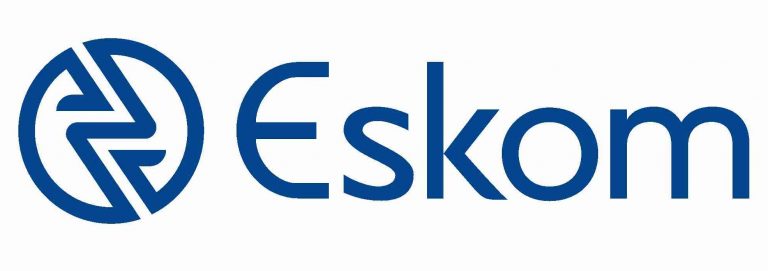Eskom’s annual results show improvement in financial performance, however, continued poor plant performance and high debt levels continue to be a concern
Key Features of the 2022 Annual Results
- Revenue increased to R246.5 billion due to 15.06% tariff increase, supported by 3.4% growth in sales volumes
- Improvement of R19.8 billion in EBITDA, an improvement of 61% due to higher revenue and cost control
- Operating profit improved with 238%, up from R6 billion to R20.4 billion
- The net loss after tax reduced to R12.3 billion from R25 billion
- Improvement in cash from operations from R31 billion to R53.4 billion, but still not sufficient to cover debt servicing costs of R70.7 billion
- Spending on open-cycle gas turbines (OCGTs) increased by more than 50% to R14.7 billion from R7 billion in 2021
- Headcount reduction to 40 421 from 42 749 due to natural attrition and voluntary separation packages (VSPs). There were no retrenchments.
- Non-payment of debt by municipalities continued to erode Eskom’s finances and had accumulated to R44.8 billion by March 2022
- Reduction in gross debt from R401.8 billion to R396.8 billion
- R31.7 billion equity support received from government during this period
- Continued unreliable Generation performance characterised by reduction in the energy availability factor (EAF) and subsequent loadshedding
- Notable progress on the build programme with Medupi Unit 1 achieving commercial operation on 31 July 2021
- Performance by Transmission and Distribution network was at acceptable levels
Friday, 23 December 2022: An improvement on all key financial indicators resulted in Eskom incurring a net loss after tax of R12.3 billion in the financial year ended March 2022. This is a 51% improvement on the R25 billion net loss (restated) reported for the previous financial year. The financial loss is largely attributable to the unsustainably high finance costs and primary energy expenses, specifically the expenditure to supplement generation capacity through the usage of Open Cycle Gas Turbines (OCGTs). Expenditure on fuel for the OCGTs doubled to R14.7 billion, from R7 billion in 2021.
Due to higher sales volumes and the favourable electricity tariff increase of 15.06% revenue increased to R246.5 billion, from R204.3 billion in March 2021. Earnings Before Interest, Tax Depreciation and Amortisation (EBITDA) improved by 61% to R52.4 billion, from R32.6 billion the previous year. The gross outstanding debt was further reduced to R396.8 billion in the period, from R401.8 billion a year earlier.
At the operating level, Eskom increased profit more than three times to R20.4 billion, from R6 billion in March 2021.
Cash from operations improved from R31 billion to R53.4 billion, mainly as a result of the substantial increase in EBITDA. However, the cash from operations was not sufficient to cover debt servicing costs of R70.7 billion.
Despite the severe Generation capacity constraints in this period, electricity sales volume increased 3.4% to 198 281GWh, from 191 852GWh in 2021.
“The year 2022 was a tremendously difficult one for Eskom. Not all our priorities as outlined in the Eskom Turnaround Plan could be achieved, particularly improving the reliability and predictability of the generation fleet following years of inadequate maintenance coupled with the current and increasing shortage of generation capacity of between 4 000MW and 6 000MW in the country,” said André de Ruyter, Eskom Group Chief Executive.
“In spite of the marked improvement in the financial performance, good progress on the new build programme, the disappointing performance on the generation front is an indication that there is still a long way to go before Eskom can achieve long-term sustainability,” added De Ruyter.
Eskom received R31.7 billion equity support from government during the 2022 period. While this government support, and the cost containment measures helped improve liquidity, Eskom’s liquidity remains constrained because of unsustainably high debt servicing costs. “Cash from operations remained insufficient to meet debt servicing and some capital investment requirements,” said Calib Cassim, Eskom’s Chief Financial Officer.
Municipal and residential area debt remained a challenge, with arrear debt by municipalities escalating by R9.5 billion year-on-year, reaching a high of R44.8 billion in March 2022.
“Eskom’s capital and tariff structure need to be permanently resolved to ensure long-term financial sustainability. In addition, the overdue debt by municipalities must be resolved. Eskom waits in anticipation the Nersa price decision on 12 January 2023 and the government’s debt relief solution to be announced in February next year,” added Cassim.
Cassim further added: “A net loss after tax of around R20 billion is expected for the financial year ending 31 March 2023. This is mainly attributable to OCGT spend exceeding the Nersa allowance, growth in municipal arrears and a shortfall in recovering debt service costs in the electricity tariffs.”
On the operational front, headcount was reduced to 40 421 employees, from 42 749 in 2021. This was due to natural attrition and voluntary separation packages (VSPs). There were no forced retrenchments.
The Generation Division continued to show poor performance, with frequent plant breakdowns subjecting the country to varying and higher stages of loadshedding.
The Transmission Division continued to deliver resilient and improving performance while the Distribution network performed at acceptable levels despite the negative effects of infrastructure and cable theft.
The build programme progressed well, with the 794 megawatts Medupi Power Station Unit 1 achieving commercial operation on 31 July 2021.
ENDS








